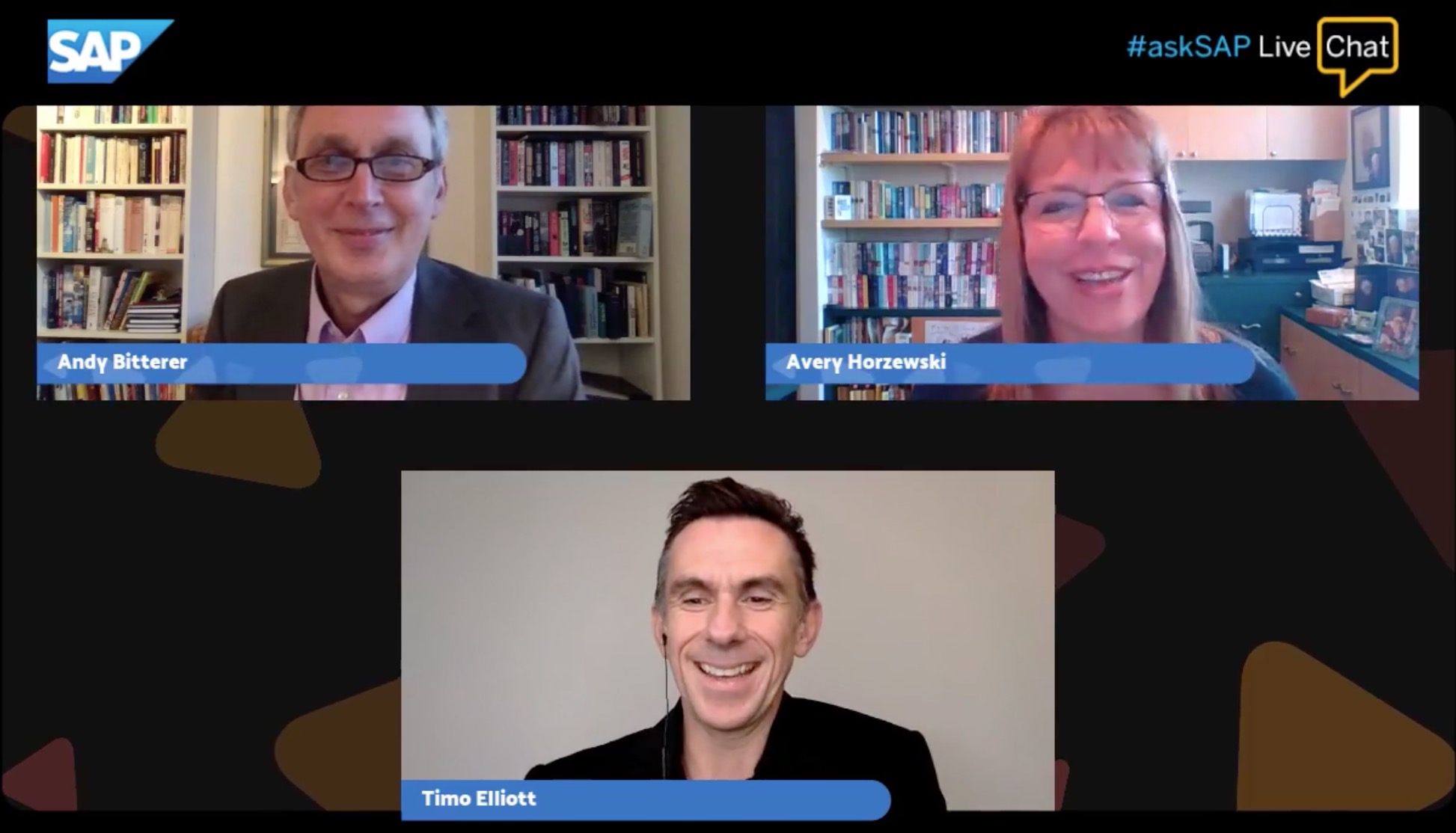Predictive technology isn’t new. But algorithms are really starting to take over! It’s clear that predictive analytics, artificial intelligence, and machine learning are going to completely transform the way companies do business.
SAP Analytics Evangelist Andy Bitterer and recently discussed the trends, the biggest challenges, and potential use cases of these technologies as part of an #askSAP Live Chat on Facebook hosted by Avery Horzewski –and that video is now available online.
These are just some of the areas we explored:
- Why, after being the “next big thing” in analytics for at least two decades, Predictive Analytics and Machine Learning are now such hot industry trends.
- How machine learning is enabling “self-driving” processes that automate the kinds of complex repetitive decision-making that up until now only humans could do.
- The biggest new opportunities for these technologies in today’s organizations.
- The easiest ways to can get started with machine learning.
In particular, we talked about what machine learning can bring to traditional analytics, including:
- More intelligent data preparation. Over 90% of average business intelligence projects involve gathering, cleaning, and joining data from different sources. Algorithms can help automate some of this work, especially for more casual business users.
- Natural-language interfaces. BI interfaces that correctly interpret user questions in everyday language via voice or chat, such as “what’s the revenue per customer this month compared to last month?” and are able to provide data in sentence form, such as “deal value is 20% lower than average for the enterprise segment”.
- Automatic outlier detection. Algorithms can spot exceptions and unusual events automatically, such as: “days sales outstanding is the western region is currently 90% higher than the average over the last six months”. This helps enable the long-term dream of true exception-driven management.
- Intelligent segmentation. Statistical techniques can automatically create groups and segments that make sense based on the data, rather than arbitrarily-defined thresholds. For example, by automatically segmenting crime data into age-ranges that match real-world trends, such as 0-14, 14-23, 23-35 etc. rather than 0-10, 20-30, etc.
- Causality and significance detection. We can use algorithms to determine the key influencers on profitability, or to check whether an uptick in sales is a real inflection point rather than just random variation.
- Advanced data sharing. Just as Amazon recommends book purchases based on what we’ve read in the past, algorithms can help identify reports and data that we might be interested in — “people like you also liked this dashboard”.
- Automated improvements. Ultimately, we have an opportunity to have BI systems that automatically adapt to users, prompting them to take analysis to the next level — “would you like to create an alert when you see something interesting”.
What do you think? What big AI/ML + BI trends did Andy and I miss?

